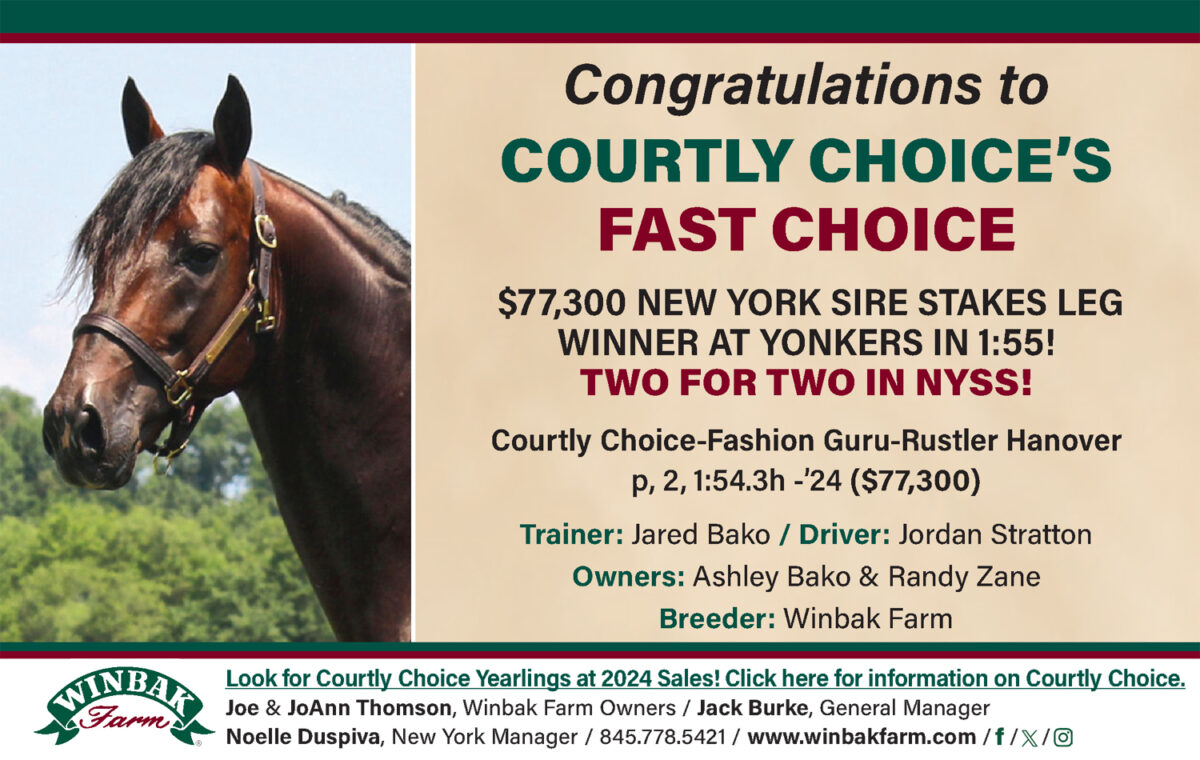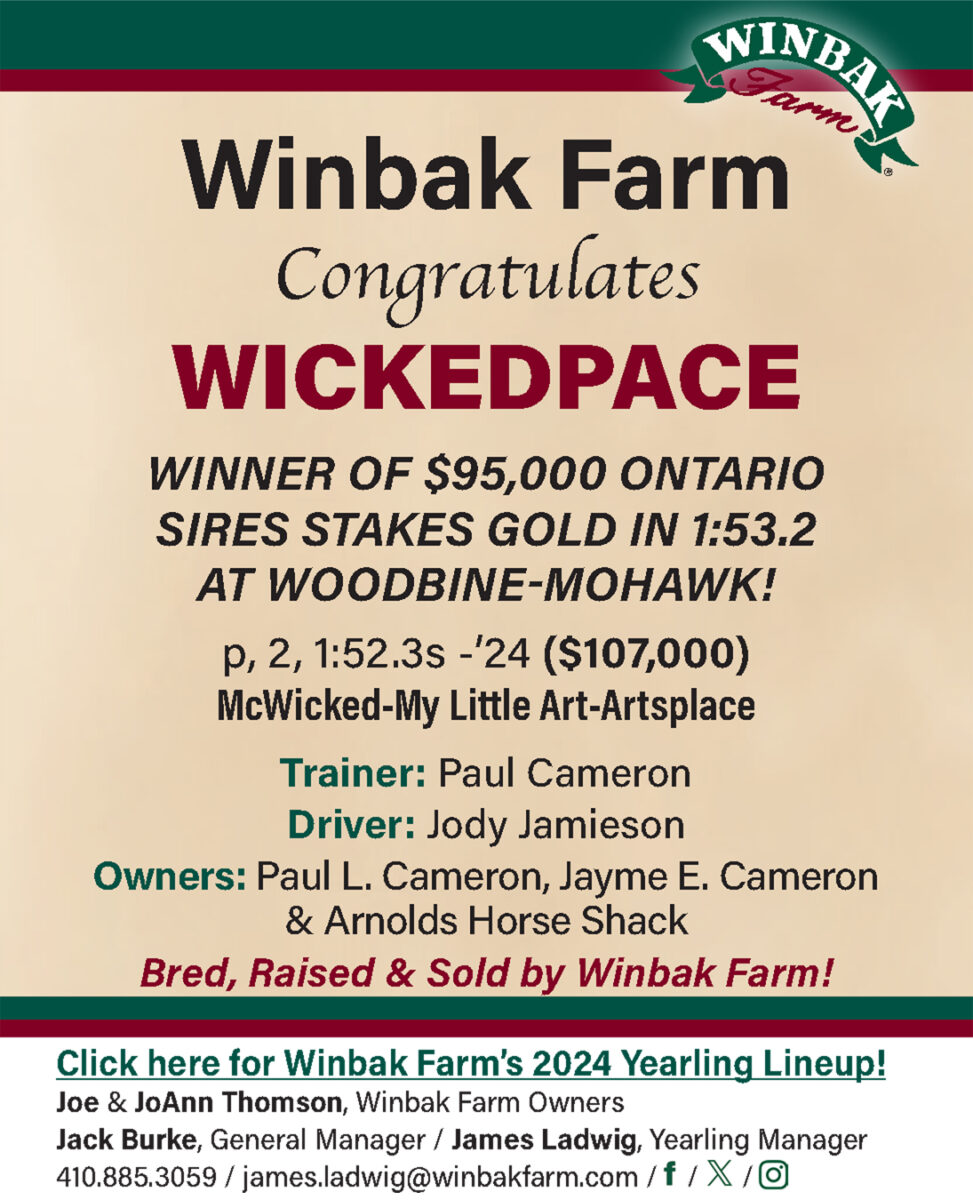

Surick case was a travesty, how to tell which young horses could be stars and who should write the chapters in an updated standardbred bible
The Guru kicks off 2019 with opinions on that and more.
by Ron Gurfein
Tidbits: Happy, healthy New Year to all.
In my career as a harness horse trainer I have had the privilege of racing for some of the greatest presiding judges. Vincent Bergamo in New York, Milt Taylor in Pennsylvania and Dick O’Donnell in New Jersey. Believe me none of the above would stand for the nonsense that has been going on in racing today. From the lost positives in Pennsylvania, the hanging judge scenario of Lou Pena in New York and now the Nick Surick arbitrary suspension in New Jersey I think we have had enough.
I am the last one to defend the Penas and the Suricks, both of whom have shoved their “expertise” down the throats of the industry, but there must be a rule of law. These are not cases that assess reasonable doubt. These are individuals that have rights and to infringe on those rights by concocting a scenario that really doesn’t exist is pathetic.
I tried to get the Surick story in its entirety by contacting Joe Faraldo and Howard Taylor. Faraldo responded that by law he was unable to discuss the case, but was kind enough to explain the law that was involved in the situation. He did reveal to me an interesting thought on the Pena verdict: “It is absolutely the worst case of abuse of power that I have ever seen.”
Taylor revealed the same position in regard to his ability to speak about the case, but told me enough that would help me but not jeopardize his attorney client privilege.
The following on the Surick suspension is pure speculation on my part, but with the knowledge of the quick reversal in the decision of the New Jersey Racing Commission to return him to good standing makes it rather obvious what occurred. Mr Surick did not respond either properly or in time to a request by the Commission for an out-of-competition test on one of his horses.
It is my understanding that the horse in question was not in his stable, but waiting to be shipped out west and he was babysitting it for a client. The commission, irate at this callousness, overreacted and immediately scratched all his horses and refused entry of the others. However, when the Surick attorneys entered the case they found that the commission obviously neglected to play by the rules set forth in the OOC guidelines. Thus, case dismissed.
The Daily Racing Form article suggested that with the scratching of 29 horses and the refusal to accept entry of the other 60 horses in his care there may be a case of financial loss involved. In my humble opinion I would surely advise against any action of reprisal. You dodged a bullet, don’t push the envelope .
On a happier note, the Eagles are in the playoffs. For how long is another question. Does Nick Foles have another miracle up his sleeve?
Kentucky football had the best year in ages capping off an excellent season with an upset of Penn State in the Citrus Bowl. So sorry for all my lunchtime friends at Isabella’s in Wilkes Barre — 90 per cent of them are Penn State alumni.
Joel Kravet asks: Now that the yearlings are 2 years old, when does a trainer sense or know which ones are the stars or the best? Whenever I read about a champ, the trainer usually comments “I knew right away he was great.”
Most of the time the prognosticators are wrong. You have to have a lot of experience training to be right about a colt in January. Trotters are much easier to assess than pacers. Not only because their gait and balance is so important, but their desire to trot and not run truly separates the good from the bad. Most pacers look basically the same and rarely make breaks. Pedigree plays a big part in the thought process. If I sit behind a trotter with a less-than-fancy catalogue page I am less likely to get excited.
The high-ticket items, when they can make you feel they do it so easily are the ones you feel confident will be good colts. All three of my Hambletonian winners I knew in January would be stakes caliber horses come July if they didn’t get sick or hurt. Everyone around Continentalvictory knew she would be a top filly. John Cashman Jr said to me in Springfield after she won the Review Futurity in less than stellar time that he was disappointed in her performance and he said, “I thought she would be great from the first time I saw her go the right way of the track,” which was actually in November. “She disappointed me today, 1:59 at Springfield wasn’t very good.” What he didn’t realize was she was a little high strung and with all the sights and sounds at the fair she was a handful when I warmed her up and Mike (Lachance) just tried to get her around the track without making a mistake, which he truly accomplished.
I tell young horseman all the time that it’s not so difficult to tell the good from the bad when you sit behind them. When it comes stake time go a quarter mile with each yearling and don’t look at your watch till you are through. Before you look, guess how fast you went. If you think you went the quarter in 40 seconds and actually went 50 you have an uphill climb and I would suggest not throwing a lot of stakes money away. However if you think you went 40 seconds and you actually went 34, send it in. Those are the ones that excel. The colts that do it so easily you feel they are not exerting any effort more often than not will rise to the top.
I have a few secrets for pacers also. If the colt’s front feet don’t land in front of his nose at full stride or his hind feet don’t land in the middle of his body about at his withers, or a bit less, than you have a long road ahead. It’s not so difficult. Recently, I bought a little filly, and I mean little. Her name is Lucy’s Pearl and she had an impeccable pedigree and every time I trained her she would do her work about 10 seconds faster than I thought she had. All of Sunshine Meadows made fun of her, but she was a really nice filly at two and three, winning almost $400,000. Last year, I went one trip with Lindy Farms’ good colt Kings County and proclaimed he was a man amongst boys. That was after a mile in 2:39 in late January. While writing this answer, I am thinking to myself I am making this sound too easy. It really isn’t that hard, we will all be wrong at times. The importance is being right most of the time. Experience goes a LONG way.
Joseph Maw asks: With the changes in the sport over the last 25 years, if the USTA were to publish a new edition of the Care and Training of the Trotter and Pacer what chapters would you include that best fit the modern day sport/business and who would you choose to contribute to each chapter?
Basically I think the chapters would remain the same, however the content would be radically different. We are not dealing with the same animal that we trained in 1960. Our horses are finer, lighter and more athletic. For the most part, horses are going as much as 10 seconds faster than they were when the book was first published. That’s 50 lengths. This is not due solely to equipment and racetrack surface, it is due to breeding a finer athlete.
You can throw the Stanley Dancer 2-year-old training schedule in the garbage unless you want to destroy a colt. Shoeing, expenses, grooming are all far advanced from that era. There were no fancy bikes. We all raced in a plain Houghton or a plain Jerald sulky. No quick hitch harness, no straight tracks, I could go on forever.
About 15 years ago, I was asked to participate in a new version but due to the lack of money the idea fell apart. It certainly would be a great project today.
Here are some suggested chapters and contributors:
Selecting the Yearling — Chuck Sylvester
Breaking the Yearling — Joe Holloway
Training the Trotter — Jimmy Takter
Training the Pacer — Robert Macintosh
Proper Use of the Straight Track — Per Eriksson
Shoeing the Standardbred — Steve Stanley
Stable Management — Ron Burke
Driving the Harness Horse — John Campbell, Michel Lachance and William O’Donnell
Raising the Standardbred — Art Zubrod
Breeding the Standardbred — Alan J Leavitt
Calling the Race — Roger Huston
The Racing Office — Joseph DeFrank
Racetrack Management — Jeff Gural / Jason Settlemoir
Thanks to all of you for the kind words and please keep the questions coming we need some fresh ideas for the New Year. Have a wonderful week.
Have a question for The Guru?
Email him at GurfTrot@aol.com.















